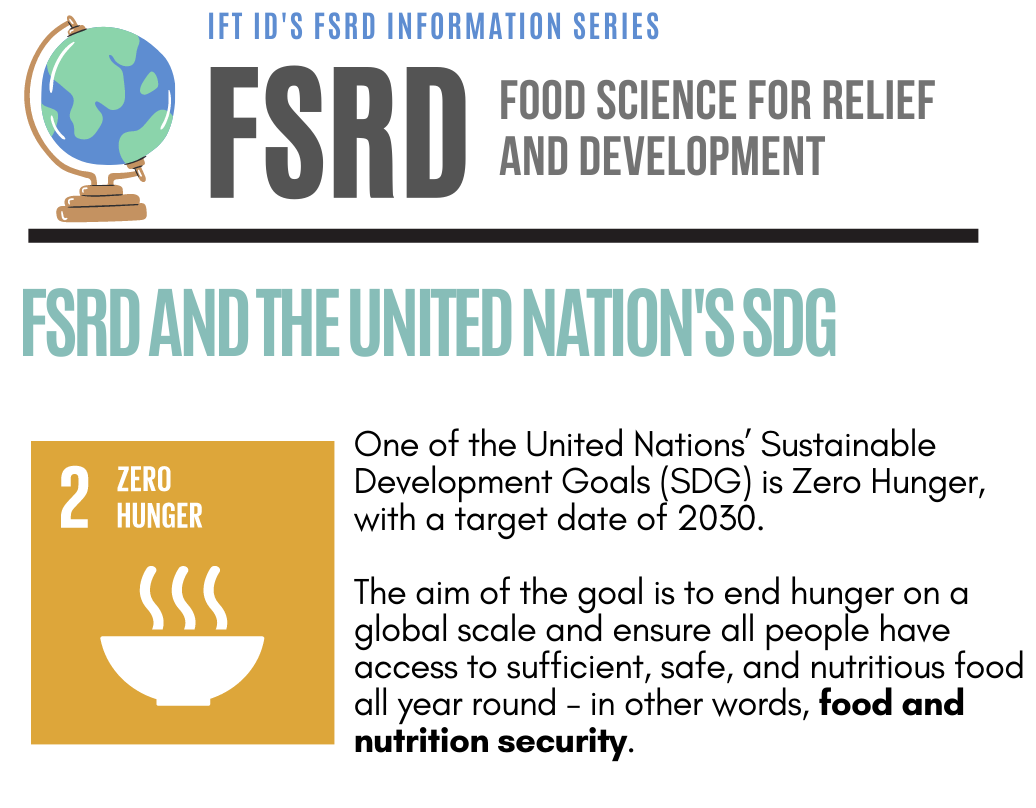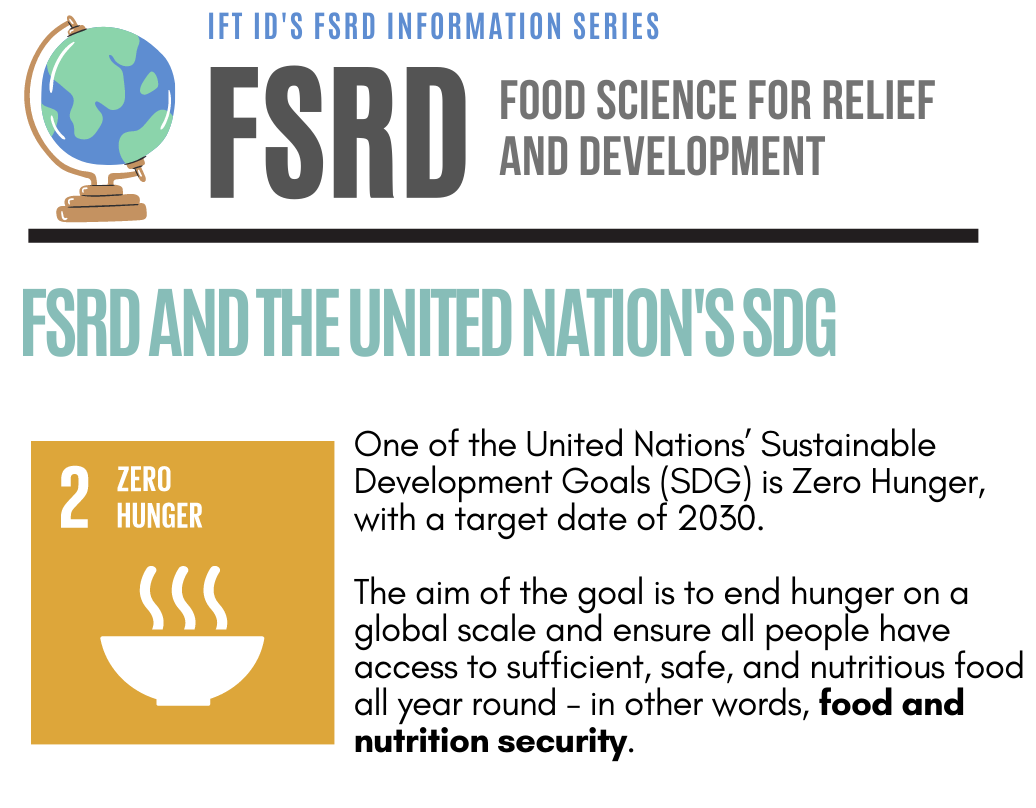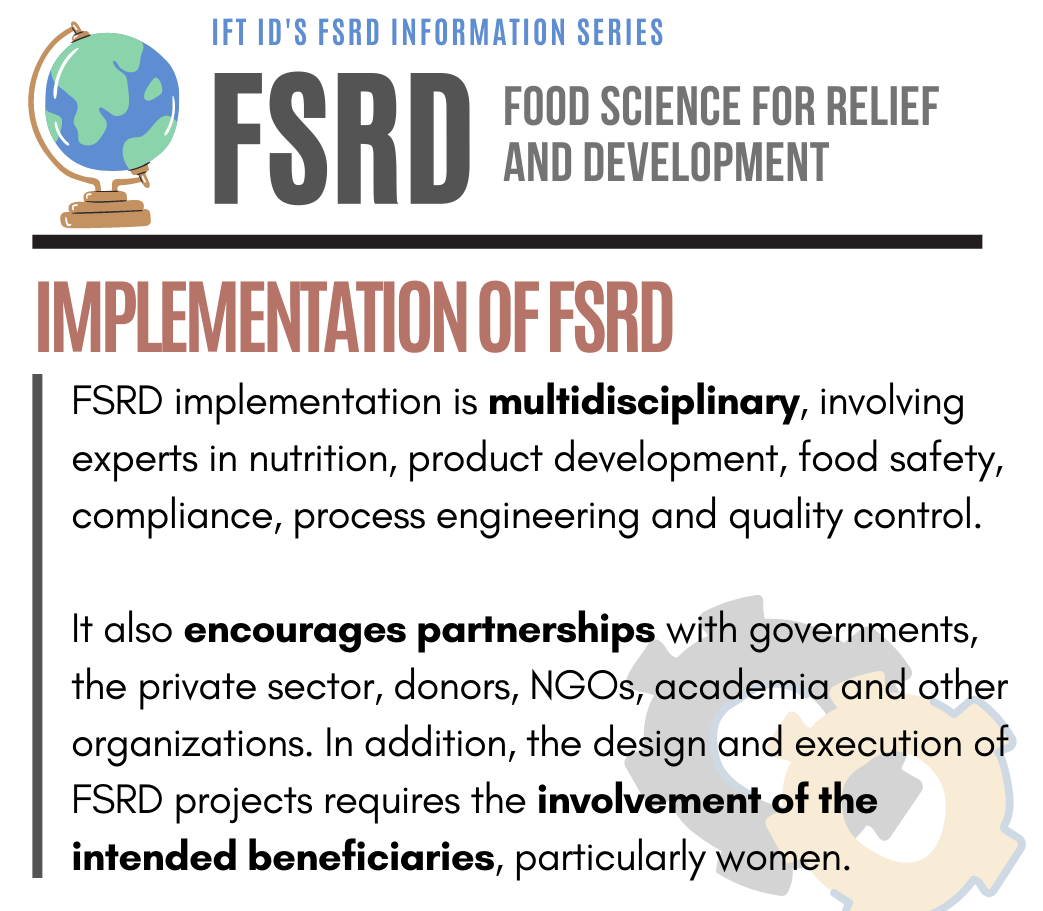
New Program Highlights Untapped Potential of Using Food Science for Relief and Development Initiatives
The new field of Food Science for Relief and Development (FSRD) offers a fresh, high-impact approach to tackling problems of global food security, poverty, and malnutrition.

Jean Pankuku in her Malawi bakery shop selling bread fortified with locally grown, biofortified orange-fleshed sweet potato. Photo credit: V. Atakos (CIP-SSA)
Food science has the extraordinary capacity to change lives, communities, and even entire nations for the better. From nutritionally complete, shelf-stable emergency rations that can sustain victims of disaster to small-scale processing equipment that allows farmers to preserve and add value to their crops, the application of food science is one of today’s most promising strategies for alleviating extreme poverty and malnutrition, catalyzing sustainable rural economic development, and ensuring global food security.
Thus far, addressing problems pertaining to food has largely relied on the application of nutritional and agricultural sciences by stakeholders in the international development and humanitarian aid communities, including NGOs and IGOs (such as the United Nations through the World Food Programme and Food and Agriculture Organization), as well as countries’ own ministries of health and agriculture. While incredible progress has been made through this approach, closer inspection reveals that expanding this perspective to include food science as the third pillar has the potential to improve the effectiveness of these efforts.
The exciting news is that a growing number of scientists, program managers, and government officials are beginning to recognize food science as the missing link in these relief and development efforts. Indeed, how effective is focusing solely on improving crop yield in a developing country where as much as half of the crop is lost due to a lack of drying, storage, and processing capabilities? How effective is promoting the consumption of a nutritionally improved crop that few want to eat due to undesirable sensory attributes or importing expensive ready-to-use therapeutic foods that could be produced closer to home at a fraction of the cost, allowing broader access to these lifesaving products while supporting the regional economy?
What is FSRD?
The emerging discipline of Food Science for Relief and Development (FSRD) can offer new solutions to these complex and lingering challenges that plague the relief and development communities. FSRD is defined as the application of food science and technology to enhance food security, health, and economic prosperity for global humanitarian and development purposes. All food science and technology subdisciplines have vital roles to play in FSRD—including food safety, quality, product development, processing, and engineering.
For food professionals accustomed to living and working in highly developed countries, a whole new perspective is often required to understand the needs and constraints common to the poorest regions of the world. Developing countries may be characterized by weak government institutions, poor infrastructure, and inadequate educational opportunities, with rural areas at a particular disadvantage. This is why FSRD requires more than just an understanding of food science. FSRD initiatives must be carefully designed to be economically and technically feasible based on resource constraints and provide culturally appropriate solutions that embrace local collaboration to support long-term success.
FSRD in Action
While the field of FSRD is relatively new, there are a number of projects currently underway that employ aspects of food science toward relief and development. One example is an innovative effort led by the International Potato Center (CIP) to encourage the consumption of the highly nutritious biofortified orange-fleshed sweet potato to prevent vitamin A deficiency in sub-Saharan Africa. Here, high rates of vitamin A deficiency are responsible for blindness, as well as increased risk of death from infection.
Despite years of work by researchers to develop a vitamin A-rich biofortified sweet potato that could improve the population’s nutritional status, consumer adoption was limited due to its negative sensory attributes, with consumers preferring the drier, starchier texture of traditional, white-fleshed sweet potatoes. By focusing on processing and product development, CIP was able to develop a puree ingredient that could be locally produced and easily incorporated into ready-to-eat products, such as baked goods. Through extensive public and private collaboration, sweet potato-fortified bread is now a success in Kenya, Rwanda, and Malawi, boosting their populations’ vitamin A intake while supporting those along the supply chain—from farmers to ingredient processors to wholesale and retail bakers.
Since food touches on so many aspects of life, the implementation of FSRD projects often results in a wide range of benefits. These can include improved nutrition, reduced food losses, improved production efficiency, the development and growth of small businesses, and increased incomes for families and communities that can lead to significant improvements in standards of living.
IFT’s FSRD Program
To highlight the great (and largely untapped) potential of utilizing food science in relief and development initiatives, IFT’s International Division has spearheaded the FSRD Program. The program’s objectives include increasing awareness throughout the humanitarian aid, international development, and food science communities of the essential role of food science in relief and development, as well as identifying and sharing examples of high-impact, scalable FSRD projects.
Toward this end, IFT’s FSRD Program relies on three integrated teams: the Case Study Team, the Communications Team, and the Organizations Liaison Team. The Case Study Team is responsible for identifying and documenting effective, real-world FSRD projects, while the Communications Team shares this information with relevant stakeholders to encourage the incorporation of FSRD into their relief and development programs. The Organizations Liaison Team collaborates with food-related professional organizations, universities, and other institutions to develop and expand FSRD activities around the globe.
Get Involved
Food science offers a host of fresh solutions to some of today’s most pressing social and economic problems. As food scientists and global citizens, we have an unprecedented opportunity to use our skills and knowledge to help make the world a better place for everyone in it. To learn more about FSRD and the role of science in achieving “Zero Hunger” or to get involved with IFT’s FSRD Program, visit our FSRD Resource Page.
About the Author
Miranda Grizio is a member-at-large of IFT's International Division and a case study writer for the Food Science for Relief and Development (FSRD) Program.




